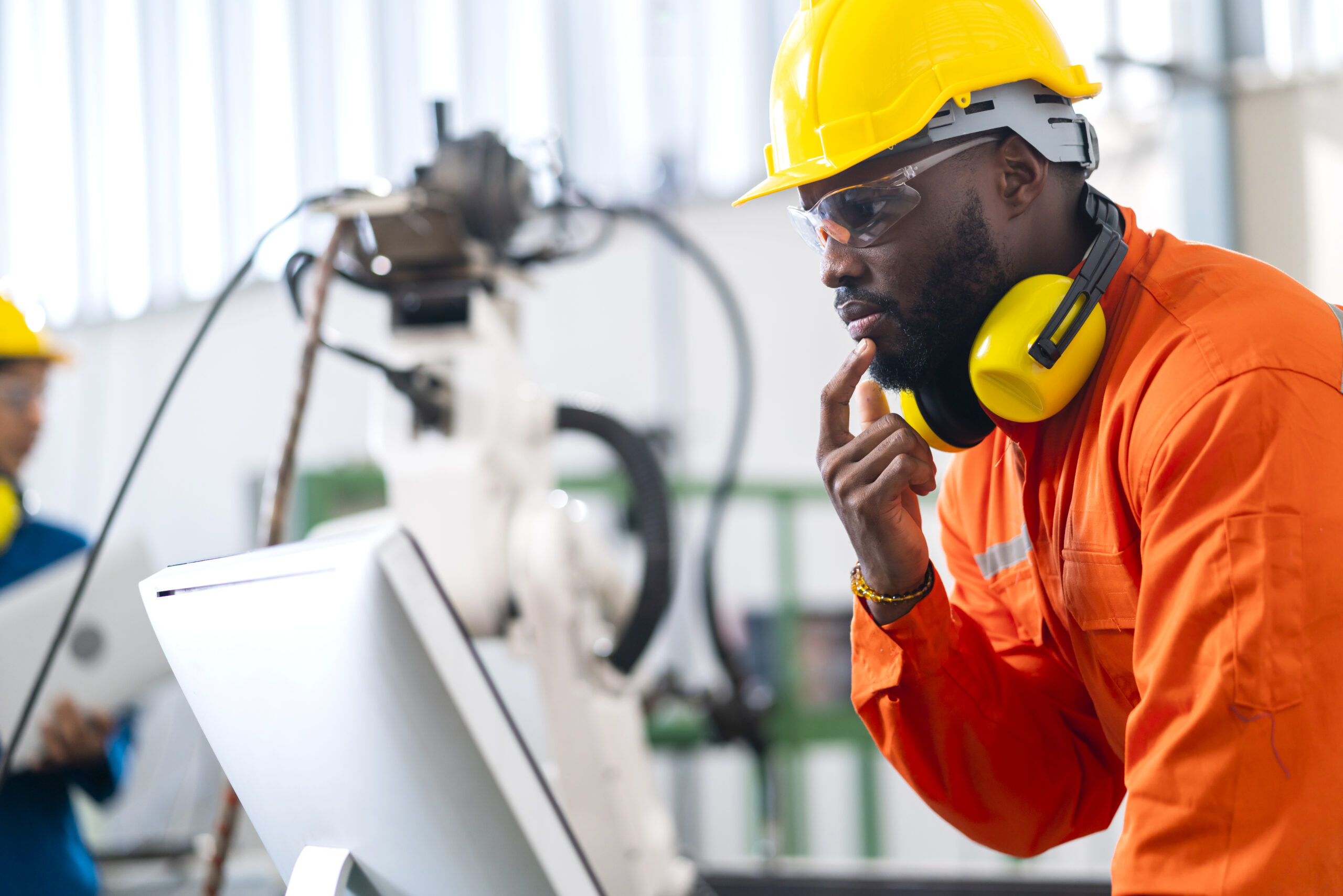Innovative Materials and Techniques in Nigerian Construction
Introduction
Innovative Material & Techniques In Construction;
Nigeria’s construction industry is evolving rapidly, driven by urbanization, population growth, and the need for sustainable infrastructure. However, challenges such as high construction costs, poor material quality, and environmental concerns necessitate innovation. Fortunately, cutting-edge materials and modern construction techniques are transforming the landscape, enhancing efficiency, sustainability, and affordability.
The Nigerian construction industry has historically been characterized by a reliance on conventional building methods and materials. For decades, sandcrete blocks, concrete, and reinforced steel have been the mainstays of construction, especially in urban development projects. While these materials have served their purpose, the pressing challenges of urban population growth, climate change, resource scarcity, and cost inflation demand more than just tradition—they demand innovation. In recent years, the construction sector in Nigeria has witnessed a subtle yet powerful shift towards the adoption of innovative materials and techniques, offering a glimpse of a more sustainable, efficient, and resilient future for the built environment.
What has sparked this transformation? Several factors converge to create an urgent need for change. First, the rapid rate of urbanization in Nigeria means that cities must accommodate millions of new residents over the next few decades. Traditional construction methods are slow and labor-intensive, often incapable of meeting the demands of speed, durability, and affordability required in housing and infrastructure. Secondly, Nigeria faces a significant housing deficit—estimated at over 17 million housing units. To bridge this gap, the industry must embrace faster, cheaper, and more environmentally friendly approaches. Additionally, the growing awareness of environmental sustainability has led developers and builders to question the ecological footprint of conventional construction practices.
The infusion of innovative materials into the Nigerian construction space offers promising solutions to these longstanding challenges. For instance, the use of alternative building materials such as interlocking stabilized soil blocks (ISSBs), bamboo, recycled plastics, and laterite bricks is gradually replacing expensive and environmentally harmful resources. These materials not only reduce costs but also lower carbon emissions, minimize dependence on imported raw materials, and enhance local economic participation by utilizing locally sourced inputs.
Similarly, novel construction techniques such as prefabrication, 3D printing, and modular construction are gaining ground among developers and real estate companies seeking to cut project timelines without compromising quality. Prefabricated buildings can now be assembled on-site in days rather than weeks, while 3D-printed homes showcase the potential to deliver custom housing solutions with high efficiency. In Lagos and Abuja, experimental housing projects have already demonstrated the viability of modular technologies in middle- and low-income housing segments.
Further driving this evolution are collaborations between research institutions, private enterprises, and international development partners. These partnerships foster knowledge transfer, capacity building, and financial support for projects that integrate modern techniques into mainstream building practices. Universities and polytechnics across Nigeria are actively researching sustainable materials and structural innovations tailored to the country’s unique climatic and socio-economic conditions.
Incorporating innovation in Nigerian construction is not merely about catching up with global trends; it is about adapting them to suit local realities. While developed countries boast of smart cities with AI-powered infrastructure and automated construction, Nigeria’s construction innovation is often more grounded—focused on solving basic but pressing problems like affordable shelter, waste management, energy efficiency, and water conservation. The innovative use of materials such as rammed earth and engineered bamboo, for example, is a nod to both traditional knowledge and modern engineering, offering culturally sensitive yet technologically advanced solutions.
Another important driver of innovation in Nigeria’s construction sector is policy and regulatory support. The Federal Government has taken steps to promote research and development in the building sector, although more aggressive legislative backing is needed to catalyze widespread adoption. The National Building Code, when properly enforced, encourages the use of appropriate and energy-efficient materials, thereby legitimizing the efforts of innovators who might otherwise struggle against bureaucratic inertia and consumer skepticism.
Financial constraints have always been a major limitation for innovation in any sector, and construction is no exception. However, recent interventions by the Central Bank of Nigeria and development banks, aimed at supporting low-interest financing for construction startups and green building initiatives, have opened new doors. Additionally, crowdfunding platforms and Public-Private Partnerships (PPPs) are enabling creative financing models that reduce risk while amplifying impact.
As the construction sector grapples with these rapid changes, workforce transformation also becomes crucial. Traditional construction skills may not align with modern techniques, thereby necessitating upskilling, training programs, and curriculum reforms in technical institutions. This gap presents an opportunity for private firms and academic institutions to collaborate in developing skill-based certifications and apprenticeships tailored for innovative construction methods.
The rise of climate-conscious and socially responsible consumers is also reshaping the demand side of construction. Homeowners, developers, and government agencies are increasingly asking questions about the life-cycle costs of buildings, their environmental impact, and the comfort of occupants. This awareness is driving demand for green buildings, energy-efficient materials, and modern construction methods that align with global standards and certifications such as EDGE and LEED.
In sum, the Nigerian construction industry stands at a transformative crossroads. While the road ahead is fraught with challenges—ranging from high initial costs and regulatory hurdles to resistance from traditionalists—the long-term gains of adopting innovative materials and techniques are substantial. These gains include cost savings, faster project completion, environmental sustainability, and improved quality of life for millions of Nigerians. The question is no longer whether innovation is necessary, but how quickly and effectively it can be implemented. The winds of change are blowing across Nigerian construction sites, and those who embrace innovation are poised to lead the industry into a more resilient and prosperous future.
This article explores game-changing materials and revolutionary techniques that are redefining Nigeria’s construction industry.
1. Game-Changing Construction Materials in Nigeria
1.1 Self-Healing Concrete
Concrete deterioration is a major problem in Nigerian infrastructure due to humidity, poor maintenance, and material defects. Self-healing concrete, infused with bacteria or microcapsules of healing agents, can autonomously repair cracks, extending the lifespan of buildings and roads.
Benefits:
Reduces maintenance costs
Enhances durability in harsh weather conditions
Minimizes the risk of structural failure
1.2 Cross-Laminated Timber (CLT)
Traditional wood use in Nigeria is often unsustainable, but CLT—a prefabricated, engineered wood product—offers a durable and eco-friendly alternative. CLT is lightweight, fire-resistant, and significantly reduces construction time.
Benefits:
Sustainable alternative to concrete and steel
Improves energy efficiency in buildings
Faster and cost-effective construction
1.3 3D-Printed Construction Materials
The global rise of 3D printing in construction is now gaining traction in Nigeria. Using a robotic arm and specialized cementitious materials, entire homes and structures can be printed in hours instead of months.
Benefits:
Reduces material wastage
Accelerates project completion
Lowers labor costs
1.4 Recycled and Green Materials
With increasing concerns about waste and environmental degradation, Nigerian construction firms are turning to recycled materials such as:
Plastic bricks (made from melted plastic waste)
Bamboo composites (stronger and more flexible than conventional wood)
Rammed earth walls (a mix of natural soil, clay, and stabilizers)
These materials reduce environmental impact and promote sustainable development.
2. Revolutionary Construction Techniques Transforming Nigeria
2.1 Prefabrication and Modular Construction
Prefabrication involves assembling components off-site and transporting them to the construction site for quick assembly. This technique is reshaping Nigeria’s real estate sector, particularly for affordable housing.
Advantages:
Reduces construction waste
Ensures higher precision and quality control
Speeds up project completion
2.2 Smart Construction & Building Information Modeling (BIM)
BIM technology enables architects, engineers, and builders to create digital 3D models of structures before construction begins. This virtual simulation allows for cost estimation, energy efficiency analysis, and seamless project collaboration.
Impact on Nigerian Construction:
Minimizes design errors
Improves resource management
Enhances project visualization and efficiency
2.3 Drone Technology in Construction
Drones are now being used for site surveying, real-time monitoring, and safety inspections in Nigeria. This is particularly beneficial for large infrastructure projects like roads and bridges.
Key Benefits:
Reduces human error
Improves project safety
Enhances construction speed and accuracy
2.4 Sustainable and Passive Design Techniques
With rising energy costs, passive cooling and green building strategies are becoming essential in Nigeria. Some innovative techniques include:
Green roofs and vertical gardens (absorb heat, reducing cooling costs)
Natural ventilation designs (reducing reliance on air conditioning)
Solar-integrated designs (harnessing renewable energy for power efficiency)
2.5 Earthquake-Resistant & Disaster-Resilient Techniques
Nigeria is not prone to earthquakes, but climate change has led to increasing instances of flooding and extreme weather conditions. To counter this, innovative flood-resistant techniques such as elevated foundation designs, flood barriers, and permeable pavements are being implemented.
3. The Future of Nigerian Construction: Challenges & Opportunities
Challenges Hindering Innovation in the Industry
Despite the promising advancements, several challenges slow the adoption of innovative materials and techniques in Nigeria:
High cost of new technology
Lack of skilled labor for modern construction methods
Limited local production of advanced materials
Regulatory and policy constraints
Opportunities for Growth
To foster innovation in Nigeria’s construction industry, stakeholders must embrace new policies, investment in R&D, and industry-wide training programs. Key strategies include:
Government incentives for sustainable construction practices
Public-private partnerships to drive affordable housing projects
Skill development programs for construction professionals.
Conclusion;
The Nigerian construction sector is on the brink of a major transformation, driven by innovative materials and groundbreaking techniques. From self-healing concrete and 3D-printed homes to smart BIM technology, the industry is shifting towards sustainability, efficiency, and cost-effectiveness.
In conclusion, the trajectory of Nigerian construction is being irrevocably altered by the rise of innovative materials and techniques that promise to redefine how we build, where we build, and for whom we build. The growing adoption of alternatives such as stabilized earth blocks, bamboo, plastic composites, and prefabricated systems is evidence that the industry is slowly shedding its dependency on imported, high-carbon-footprint materials. These changes are not cosmetic—they are deeply structural and carry the potential to address some of the most pressing issues the nation faces, including affordable housing, job creation, climate resilience, and sustainable urbanization.
This transformation, however, is not taking place in a vacuum. It is propelled by an intricate web of factors, including technological advancement, environmental imperatives, rising construction costs, government policies, and shifting consumer preferences. For stakeholders in the construction ecosystem—builders, architects, policymakers, engineers, developers, and academics—recognizing and responding to these dynamics is not just important; it is essential for relevance and competitiveness.
The story of innovation in Nigerian construction is also a story of inclusivity and context. Unlike in some countries where innovation is driven solely by luxury or aesthetics, in Nigeria, innovation is deeply utilitarian. It is about building smarter with less—less money, less time, less carbon, and less waste. It is about maximizing impact while minimizing harm. This grounded approach ensures that innovation remains accessible, relevant, and scalable across various socio-economic strata.
Yet, the journey is far from complete. Many barriers remain. Skepticism from industry veterans, lack of regulatory clarity, and limited access to capital continue to stifle innovation. Additionally, there is a significant knowledge gap among end-users, many of whom are unaware of the benefits of modern materials and may resist change out of fear or familiarity. Bridging this gap requires consistent advocacy, pilot projects, demonstration buildings, and robust public awareness campaigns to educate both consumers and industry practitioners about the tangible and intangible benefits of innovation.
There is also a strong need for institutional support, particularly in education and professional development. As new techniques and materials become mainstream, technical competence must evolve in tandem. Curricula in Nigerian universities, polytechnics, and vocational institutes must be updated to include contemporary topics such as green construction, digital fabrication, and life-cycle analysis. Continuing professional development programs should be encouraged and even mandated, ensuring that the industry remains future-ready.
Moreover, the role of government cannot be overstated. Regulatory agencies and policymakers must go beyond lip service and actively support innovation through clear guidelines, building codes, subsidies, and tax incentives. Agencies like the Federal Ministry of Works and Housing, Standard Organisation of Nigeria (SON), and the Nigerian Building and Road Research Institute (NBRRI) have critical roles to play in driving standardization, research, and public-sector adoption of new technologies.
Private sector actors also have an equally vital role. Developers and construction firms must lead by example, adopting innovative practices in their own projects and sharing their learnings with the broader community. Financial institutions should be willing to back forward-looking initiatives, understanding that the short-term risks of innovation are outweighed by long-term sustainability, profitability, and social good. NGOs and multilateral organizations must continue to partner with local innovators, helping to bridge the funding and expertise gaps that frequently hinder progress.
The sustainability implications of these changes cannot be ignored. As Nigeria continues to grapple with the effects of climate change—flooding, desertification, and extreme weather—the construction sector must adapt to be part of the solution rather than the problem. By embracing environmentally friendly materials and processes, the industry can significantly reduce greenhouse gas emissions and ecological degradation while improving the resilience of communities.
In essence, innovative materials and techniques in Nigerian construction are not just technical evolutions—they are social, economic, and environmental revolutions. They are the building blocks of a new national narrative, one that speaks of possibility, progress, and a better quality of life. As this transformation unfolds, the choices made by industry leaders, government, educators, and everyday Nigerians will determine how far and how fast the sector can move. Now is the time to embrace change—not timidly, but boldly—and to build not just structures, but a sustainable future for all.
Beyond the need for new materials and faster techniques lies the deeper issue of redefining value in the Nigerian construction industry. Historically, success in construction has been measured by the scale of the project or the profit margin it delivers. But in a modern context, a truly successful construction project must be measured by its sustainability, adaptability, cost-efficiency, and social impact. Innovative materials and techniques provide an opportunity to rethink what it means to build wisely and equitably in a country where infrastructure gaps persist and climate challenges grow more severe each year.
Incorporating innovation also aligns with Nigeria’s larger development goals, such as the Economic Recovery and Growth Plan (ERGP), which emphasizes infrastructure development, industrialization, and job creation. The construction sector—when innovatively driven—can serve as a catalyst for these goals. For example, the use of locally sourced alternative materials reduces import dependency and creates jobs along the value chain—from extraction and production to application and maintenance. In rural areas especially, where traditional materials are often the only accessible option, innovations like compressed stabilized earth blocks or bio-based insulation can empower communities to build quality structures with minimal environmental degradation and financial strain.
On a macroeconomic level, the impact is even more significant. Nigeria’s construction sector is one of the largest employers of labor, yet it has remained inefficient for decades due to outdated practices. Innovation introduces much-needed productivity and can attract foreign direct investment, especially from global construction firms looking to partner with local innovators. It can also help Nigeria meet international development and climate targets, such as the UN Sustainable Development Goals (SDGs) and the Paris Agreement on climate change.
Cultural and aesthetic considerations should also not be ignored in this wave of innovation. Indigenous construction styles, materials, and spatial designs offer rich inspiration for modern techniques. When adapted properly, they provide not only functional advantages such as thermal comfort and durability but also a unique architectural identity that distinguishes Nigerian urban and rural landscapes. The blend of cultural heritage and modern engineering is a powerful expression of national innovation—one that is both respectful of the past and forward-looking.
For Nigeria to fully benefit from these advancements, inclusive policy frameworks and stronger institutional backing must become a reality. Enforcement of building standards must be fair and consistent, regulatory approvals must be streamlined, and research must be better funded and translated into practical industry applications. Innovation must also be democratized—it cannot be the preserve of large firms or wealthy developers. Through strategic incentives and awareness campaigns, the average Nigerian builder, landlord, or tenant should come to see innovation not as an elite trend, but as a practical, cost-saving, and empowering choice.
Ultimately, the success of innovative materials and techniques in Nigerian construction will rest on sustained commitment. It is not a one-off project or a passing fad; it is a long-term transformation that requires buy-in from every segment of society. If properly nurtured, it will reshape cities, create resilient communities, and leave a legacy of responsible, forward-thinking development. The time to build the Nigeria of tomorrow is now—and innovation is the foundation upon which that future must be laid.
By embracing these innovations, Nigeria can revolutionize its construction landscape, creating resilient, eco-friendly, and high-quality infrastructure for the future.


